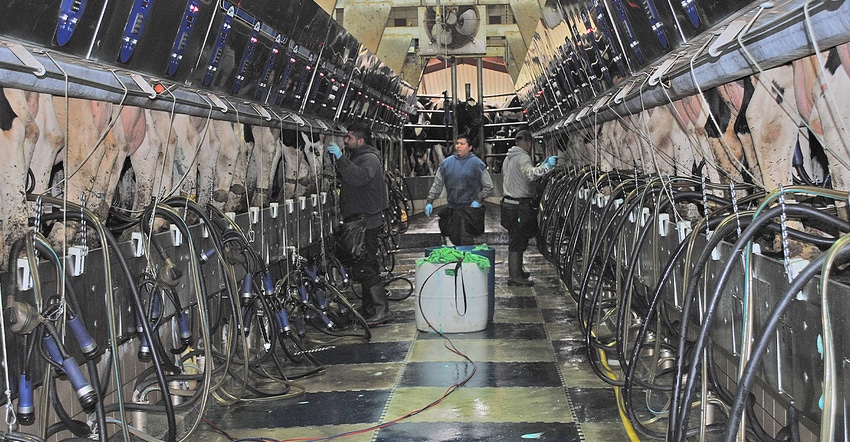November 25, 2019

Modern dairy farms usually use antimicrobial drugs to both treat and prevent disease. In dairy herds, the most common reason for administering intramammary or systemic antimicrobials to cows is due to intramammary infections — mastitis — caused by bacteria. An intramammary infection is followed by an inflammatory response where somatic cells increase, and clinical signs may be observed — clinical mastitis.
There has been a growing societal concern about increasing antimicrobial resistance because antimicrobials are commonly used in dairy herds. However, there is no strong scientific evidence of increased resistance of among mastitis-causing pathogens.
Wisconsin study
Scientific findings from a study conducted in 50 Wisconsin dairy herds concluded that most farmers treated cows based on clinical symptoms (clotted milk, inflamed udder, fever) rather than culturing milk to determine the organism causing the infection. Further research trials have described that antimicrobial usage can be reduced by understanding the distribution of pathogens causing clinical mastitis and applying selective therapy to cows infected with pathogens that will be killed by antimicrobials.
Mastitis treatment protocols should encompass the description of how clinical mastitis is detected and defined, the drugs permitted for treating clinical mastitis, factors that modify the success of antimicrobial therapy, and outcomes used for determining success after antimicrobial treatment.
Let’s take a closer look at these protocols:
1. Detection. Clinical mastitis can be classified as mild (only abnormal milk), moderate (abnormal milk and swollen or red udder) or severe (abnormal milk accompanied by systemic signs such as fever or depression). Mild, moderate and severe cases encompass about 50%, 35% and 15% of clinical mastitis cases, respectively. Mild cases can only be detected by forestripping at the beginning of the milking routine. Antimicrobial treatments should vary depending on the level of inflammation and localization of inflammation within the body of the cow.
2. Identification of pathogens. On-farm culture is a diagnostic tool based on the use of selective media to arrive at limited microbiological diagnoses within 24 hours after sampling milk. Farmers can make more judicious decisions about usage of antimicrobials for treatment of clinical mastitis by using on-farm culture.
3. Drugs permitted for treatment. Herd veterinarians should be involved in developing clinical mastitis treatment protocols because most drugs require a prescription, and all require a prescription for extra-label use. It is better to choose drugs active against either gram-positive or -negative bacteria identified using on-farm culturing versus drugs with a broad-spectrum activity. As regulations for usage of antimicrobials are very strict, it is best to involve a veterinarian to guide treatment decision of clinical mastitis.
4. Factors that modify treatment success. Some bacteria are more adapted to inhabit within the mammary gland tissue; thus, it becomes harder for the immune response of the cow to get rid of infection. For example, Staphylococcus aureus is more persistent than bacteria that can infect superficial surfaces such as Escherichia coli. Overall, cows need to be healthy enough for the antimicrobial to help the immune system to eliminate the infection. Then it is necessary to make sure the animal is a suitable candidate for treatment.
5. Outcomes used to determine treatment success. Farmers need to record outcomes that reflect that an intramammary infection is no longer present. The best outcomes are those that reflect the mammary gland health over time, such as no recurrence of clinical mastitis and somatic cell count reduction. It is not recommended to use clinical cure (normal milk), as milk may return to normal appearance in four to seven days regardless of type of antimicrobial administered or mastitis-causing pathogen.
Fuenzalida is the Extension agriculture educator in Dane County, Wis. This column is provided by the University of Wisconsin-Extension Dairy Team.
You May Also Like




